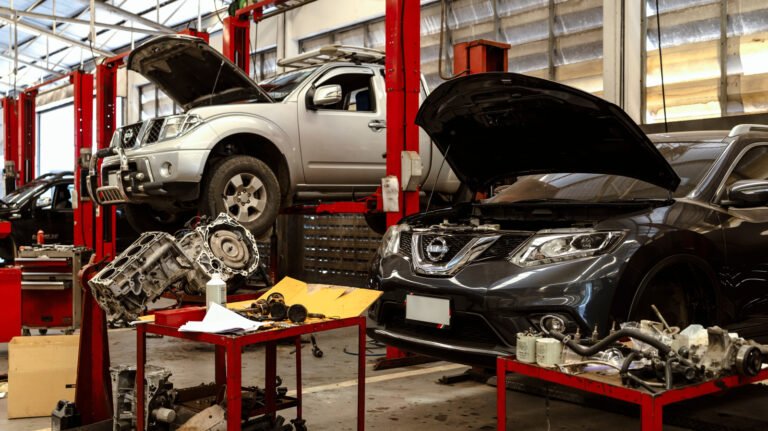Here’s How Thick Concrete Needs To Be For A 2-Post Car Lift
Memory Stockphoto/Shutterstock
Car lifts save space, provide clearance for maintenance, and make repairs quicker and far more convenient. In recent years, two-post lifts have also become quite popular among DIY enthusiasts. Although you can put a car lift in your garage, there is a catch — simply buying one and bolting it down is not enough.
Car lifts are heavy. This is why they must be properly installed to avoid any potential issues. The main factor? The overall thickness and strength of the concrete. For most two-post lifts, you’re really asking for trouble with anything less than four to four and a half inches of solid, reinforced slab beneath you. For lifts designed to carry 10,000 pounds, it’s generally advised to go for six inches to be extra safe.
If you want to install even heavier lifts up to 12,000 to 15,000 pounds, that six inches should only be the starting point. Car lifts also require concrete of no less than 3,000 PSI to endure the weight. In this case, the more PSI, the better. Here’s how thick concrete needs to be, and how to install your two-post car lift correctly.
Installing a two-post car lift
wavebreakmedia/Shutterstock
A car lift should only be installed on a level concrete surface. Its two columns have to be firmly anchored. First, lay down a layer of gravel to help the concrete settle, avoid cracking, and improve water runoff. Now is also a good time to install rebar or mesh. This will increase the overall tensile strength of the concrete. Once the concrete has been poured, let it sit and cure for 28 days before installing a lift.
As far as the anchor bolts are concerned, embed them at least three and a quarter inches deep. They also shouldn’t protrude any more than two and a quarter inches off the floor. Lastly, place them more than eight inches from the edges to avoid cracks. Lift manufacturers typically provide further information on requirements and installation best practices, so be sure to keep these in mind.
Installing these requires precision, the right tools, and enough time. Therefore, it’s often better to have a professional do it, although a DIY installation is possible. Either way, if you don’t fancy spending thousands on a lift and professional installation, or you believe it might just be overkill, ramps could be the best car lift alternative for your garage.
Maintaining a two-post car lift
Drazen_/Getty Images
Regular daily maintenance includes visual and leak inspections. Therefore, assess your safety locks, cables, and other moving components. Inspect and tighten bolts, nuts, and screws at least once a week while topping up hydraulic fluid when running low. Cleaning the essential components should be carried out monthly, along with checking the entire hydraulic system for leaks.
Adjust or replace the cables if they have visible signs of stretching and the hands are uneven. Annual maintenance entails replacing anything showing signs of wear, such as hoses, clamps, cables, and sheaves. It’s also a good idea to check overall alignment and leveling. Lastly, re-checking and re-torquing the anchors after three months to a year of use is also beneficial, especially if the lift is still fairly new.
Also, make sure to grease the carriage, the arms, and the pins at least once a year. If you don’t, it can age them prematurely. According to Real Garage Life, “to replace all three of them to get back, you pretty much have a cost of a lift in it.” Regardless, if you want to do it yourself, be sure to first learn how to properly load a grease gun and only use grease compounds recommended for your lift.

